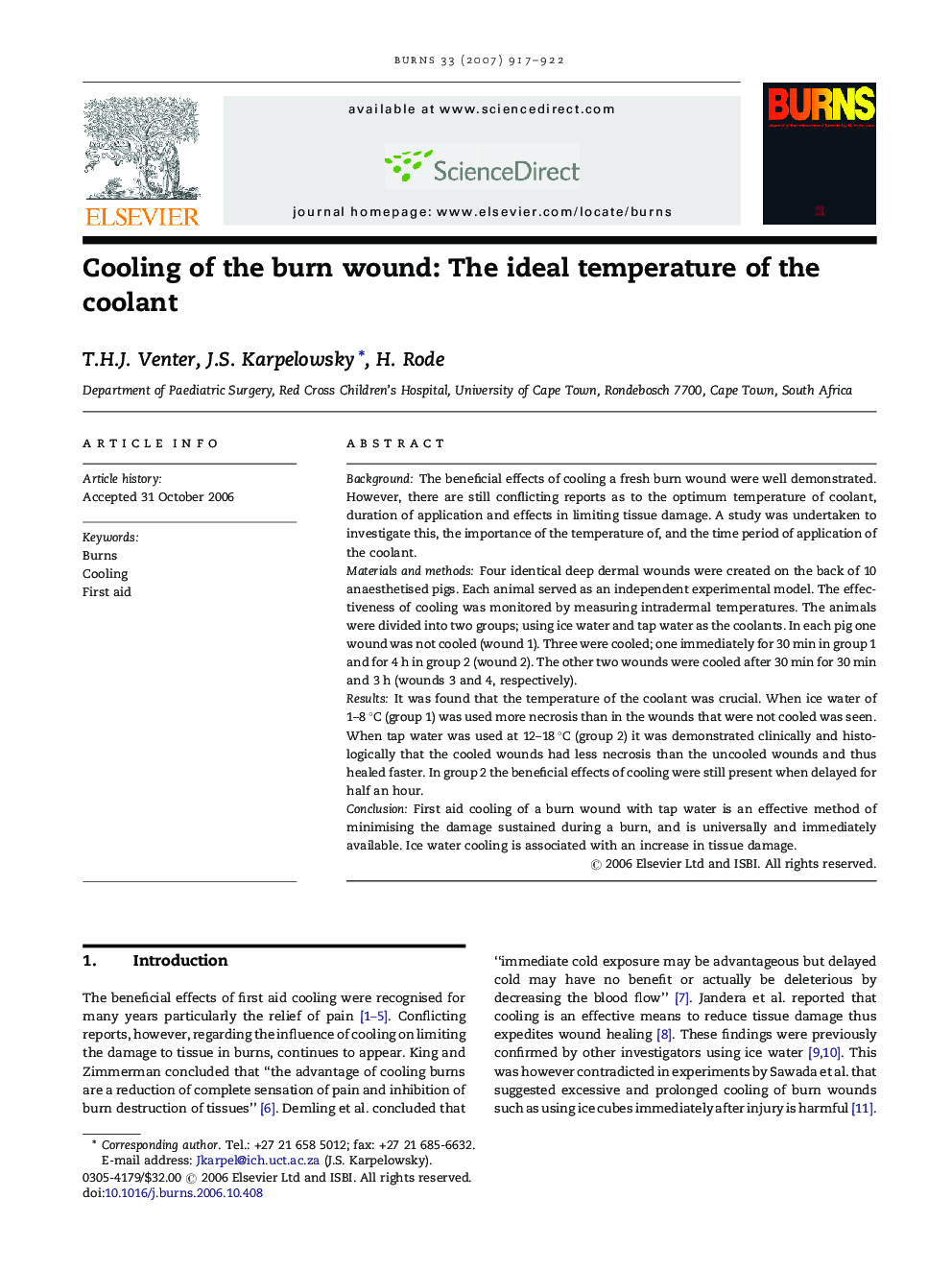| کد مقاله | کد نشریه | سال انتشار | مقاله انگلیسی | نسخه تمام متن |
|---|---|---|---|---|
| 3106594 | 1191722 | 2007 | 6 صفحه PDF | دانلود رایگان |

BackgroundThe beneficial effects of cooling a fresh burn wound were well demonstrated. However, there are still conflicting reports as to the optimum temperature of coolant, duration of application and effects in limiting tissue damage. A study was undertaken to investigate this, the importance of the temperature of, and the time period of application of the coolant.Materials and methodsFour identical deep dermal wounds were created on the back of 10 anaesthetised pigs. Each animal served as an independent experimental model. The effectiveness of cooling was monitored by measuring intradermal temperatures. The animals were divided into two groups; using ice water and tap water as the coolants. In each pig one wound was not cooled (wound 1). Three were cooled; one immediately for 30 min in group 1 and for 4 h in group 2 (wound 2). The other two wounds were cooled after 30 min for 30 min and 3 h (wounds 3 and 4, respectively).ResultsIt was found that the temperature of the coolant was crucial. When ice water of 1–8 °C (group 1) was used more necrosis than in the wounds that were not cooled was seen. When tap water was used at 12–18 °C (group 2) it was demonstrated clinically and histologically that the cooled wounds had less necrosis than the uncooled wounds and thus healed faster. In group 2 the beneficial effects of cooling were still present when delayed for half an hour.ConclusionFirst aid cooling of a burn wound with tap water is an effective method of minimising the damage sustained during a burn, and is universally and immediately available. Ice water cooling is associated with an increase in tissue damage.
Journal: Burns - Volume 33, Issue 7, November 2007, Pages 917–922